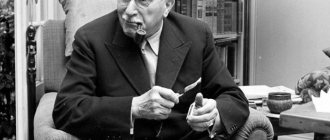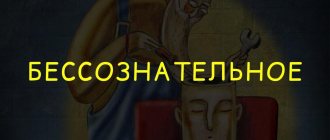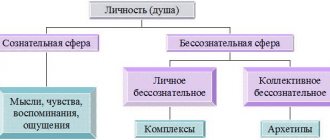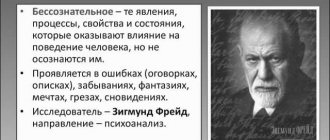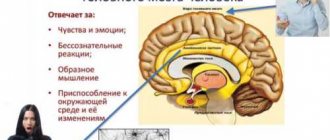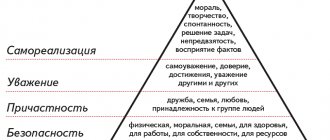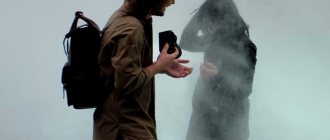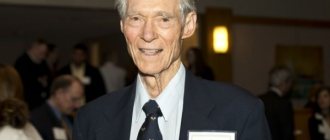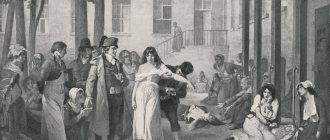The concept of the collective unconscious by Carl Gustav Jung contains the following sections: definition of what the collective unconscious is; psychological significance of the collective unconscious; method of proof; example. In the definition, the scientist explains that the collective unconscious is a segment of the psyche that is not the result of a person’s personal experience. This mental system is inherited, and if problems in the personal unconscious are based on complexes, in the collective unconscious they are based on archetypes. In other words, the nature of the collective unconscious is faceless and identical for each individual. In the section “The Psychological Significance of the Collective Unconscious,” Jung considers the mediation of instincts in human life and draws a parallel with his concept and the possibility of proving it in the same way.
As an example of proof of the existence of archetypes of the collective unconscious, he puts forward the plot of Leonardo da Vinci’s painting “St. Anne with the Virgin Mary and Christ.” Freud emphasized in his analysis of the reason why Leonardo painted this painting on the fact that he had two mothers. That is, there was a personal reason. Jung puts forward a refutation, pointing out that most likely it was the result of the influence of the double mother archetype. And to continue the proof, he gives an example of the presence of an archetype of double birth - spiritual and physical.
Examples here include the ancient Greek hero Hercules, to whom the gods of Olympus granted unearthly strength and frescoes on the maternity wards of the pharaohs, where it was clearly depicted that the pharaoh is only partly a man, and partly a god. He summarizes his evidence by saying that Leonardo most likely painted the picture not because of a personal reason, but because this archetype - the archetype of the double mother - was most recognizable and understandable to people. Continuing this section, Jung argues that people exposed to the archetype are “capable of any kind of madness.” As an example, he cites the genocide of Jews by the Nazis, identical to the persecution of the Israelis during the reign of the Roman Empire. The impact of the archetype, according to Jung, can lead to the emergence of an extensive conflict that contributes to the emergence of nervousness.
According to Jung, proof of the existence of the collective unconscious is the presence of dreams. If there is some kind of unrealized fantasy, it will certainly result in repetitive, intense dreams, where some archetype symbol will appear. If you realize this fantasy, then you will have dreams on this topic less often and weaker. Jung concludes that recurring visions occur when some instinct is suppressed. That is, if the ban on its implementation is lifted, then the fantasy will leave the unconscious. But Jung did not consider this method to be as safe as possible and recommended using it in practice with special care. Many archetypal sources were found by Jung in the delusions of paranoids, fantasies observed in a state of trance and the dreams of children 3-5 years old. In the example, Jung shows an experience he gained from treating one of his schizophrenic patients. During the period of weakening of the symptoms of the disease, the patient was allowed to walk along the corridor of the hospital, and he, looking out the window, saw a hallucination that the sun had a phallus that caused the wind.
Jung drew a parallel between the patient's hallucinations and passages from Dietrich's book on the study of mythology. This work collected various instructions, rituals, and visions. One of the visions coincided almost 100% with the hallucination of Jung's patient. The scientist excludes the presence of cryptomnesia in the patient and reading his own thoughts. Since these data from the patient were received in 1906, and Dietrich’s book was written in 1910. Therefore, Jung saw in these visions not coincidences, but inherited ideas, that is, archetypes.
Discoverer of the theory
The author of the theory was the famous Swiss psychoanalyst C. G. Jung. In 1916, everyone first heard about this term in an article entitled “The Structure of the Unconscious,” in which the scientist, introducing a new concept, noted that Freud was the first to identify historically formed human nature in the dreams he analyzed.
In considering this theory, Jung advanced further and overtook Freud, despite accepting from his teacher that his fundamental ideas about the conscious process are in no way explained by the physiology and structure of the human brain, and also that man cannot create the psyche by his own will.
Problem and criticism
The main problem of Jung's theory is the use of biological and sometimes even mystical explanations of human existence. Religion and myths always seemed to him to be something that is closely connected with the human psyche, something that is part of the collective unconscious.
Perhaps it was precisely because of this that the theory was not accepted by the scientist’s colleagues. In their opinion, this is nothing more than an attempt to justify antisocial behavior.
There is another reason why the collective unconscious is not popular - this theory can neither be proven nor disproved. You can only believe in it.
Phenomenon concept
If we talk about this theory briefly, then in his concept the famous Swiss psychoanalyst Carl Jung argued that a person’s personality consists of three different, but interconnected structures. The ego is the core of the area of consciousness, being the central component, which is the totality of thoughts, feelings, sensations and memorable memories through which a person has the ability to realize his unity and perceives himself as a separate individual.
The unconscious personal contains conflicts, moments and life memories that were once significant to us, but have now become forgotten. This concept can also be represented as emotional impressions suppressed in the mind, which lacked the significance and vividness to be remembered.
Using the method of the collective unconscious concept today
Today, probably more than one training for business development, acting courses, or simply training for sales managers, is not complete without such exercises as learning to feel another person. Good development of this skill helps both in business and in personal life. But even this primitive exercise can sometimes be difficult to perform. Because in pursuit of the speed of the technological age and commercial success, we have forgotten how to feel each other. Primitive people in this regard were much more effective than us, sensing over long distances that a trouble had happened to a fellow tribe member and that help was needed. But we can feel another precisely through this very collective unconscious. So, a person can smile, but in his heart be angry with us. And we can feel its negativity only through a collective connection. See this discrepancy between the external and the internal.
We can say that the use of the method of the concept of the collective unconscious has become widespread, even commonplace. Now it’s quite conscious. At the beginning of its emergence, Jung was perceived as almost crazy with this concept. And now it seems to be in the order of things to “calibrate” a person (or even an entire community) and adapt to him in order to use him for his own purposes. Yes, Jung would like a more careful use of his concept, a more ecological approach. But, unfortunately or fortunately, everyone applies this method depending on their own ethical guidelines.
As for the treatment of mental patients, analytical psychology is also progressing. Let's consider one of the aspects, such as creativity therapy, introduced precisely by Carl Jung. Now there is not a single more or less serious psychiatric clinic where this method is not used. Patients draw, sculpt, design something and their conditions are expected to improve. They literally heal their souls with creativity. Information from dreams is used and deciphered to apply the information received to improve the patient's condition. And they teach him to interpret his dreams in the most correct way, so as not to be dependent on the therapist. Be able to help yourself.
Summary
Jung's theory says that the mass unconscious is a phenomenon, based on the concept of which each individual is a bearer of the experience of universal development. It passes through impulses through the structure of the brain and finds its expression in patterns of behavior that are activated in some particular situation . It is worth highlighting several fundamental theses:
- In the deeply hidden layer of our personal structure there are not only components of the archaic form of human existence, but also echoes of the life of our animal ancestors. In the role of the main content of a person’s mental life, Jung saw the individual’s desire for the absolute embodiment of his abilities and strengths, the realization of the potential of not only the conscious, but also the unconscious.
- Our “I”, according to Jung, does not seem to be the true center of the psyche. This is the point of view, rather, of modern psychology, which captures the fact that human consciousness is far from the unconscious and, if necessary, communication with it requires great mental effort.
- The dramatic gap between nature and civilization has sown global human neurosis. It becomes much more complicated during the progress of cultural development and regression of the environmental situation. The Industrial Revolution moved man even further away from his natural unconscious. This caused an increase in social irrational forces, psychological inflation, leveling of people and the emergence of social man with his difficult to overcome desire for disaster. Because of this, the risk of the formation of various mass psychoses and the dominance of totalitarianism increases.
Jung's theory of the collective unconscious states that for maximum communication with it, amplification is required, that is, an expansion of consciousness that has comprehended its deepest foundations. Through it, the psychologist saw not only a connection with the unconscious, but also the possibility of treating neurotic disorders. He believed that establishing this connection leads, paradoxically, to individuation.
Jung always tried to focus on the power and danger endowed with the archaic heritage of humanity , which is hidden in the designs of the design bureau. The scientist noted that psychologically all intelligent beings on the planet are still at the stage of childhood. They do not have the necessary experience for the development and biological-psychological recording of cultural facts.
As resources for containing the inveterate aggressiveness of people and their constant desire for power, Jung proposed the proclamation of humanism in society and a democratic system as a form of organizing collective life.
The author of other works on psychology, Carl Gustav, argued: the personal conscious, which consists of possible contents that were ever conscious, was forgotten and squeezed out of memory. KB implied that its components never existed in the consciousness itself and were never acquired individually, but are an element of the universal heritage.
What is the collective unconscious
According to Jung's theory in psychology, the collective unconscious is one of the layers or layers of the subconscious. To put it another way, this is an information field that contains a large amount of different data. What forms the structure of the collective unconscious according to Jung? Life experience, but not of each individual person, but of the entire society.
Jung himself described this concept as follows: “The collective unconscious is one of the forms of the unconscious, common to society as a whole and is a product of inherited brain structures.” Unlike the individual unconscious, the collective is common to all people who have lived and are living on the planet, regardless of their life experience or history. In essence, this is a kind of common denominator that unites people who are radically different from each other.
According to the scientist, the collective unconscious represents information from the mental world accumulated over the millennia during which humanity has existed. The individual unconscious is information from the mental world of a particular person.
Structure of the phenomenon
It is important to study in more detail the in-depth list of KB components in order to understand its structure. Summary of the parameters of collective unconsciousness:
- heredity;
- a set of archetypes that are good examples of the manifestation of instinct;
- a historical formation in nature, where the behavioral patterns of all peoples are absolutely identical, all this can be the only basis for everyone to affirm the fact of the life of the soul;
- inability of the will to exercise control.
In other words, we are all connected to the CB from birth, this is passed on to us by inheritance, the information coming from the CB is not amenable to consciousness and mental phenomena related to it (will).
Basic Archetypes
If we examine the archetypes of the collective unconscious, we can note the following point: all peoples in their experience of CB have images with some plots that are repeated among themselves and have a deeply hidden relationship (for example, myths, legends, traditions).
Jung coined the term “archetypes of the collective unconscious.” He discovered them, deciphered them and was able to put them into use, seeing how they were formed in tribal and clan values. These archetypes entail individual meanings, emotions, meanings, and also play the role of helpers in the survival of tribes and peoples in difficult life situations.
This concept can be found in the human psyche through dreams and when engaging oneself in altered conscious states. Following Jung's philosophy, the main archetypes of KB will be considered as follows:
- Mother, personifying the source of altruism in the human personality, the feeling of connection with it and nature, absorption by these components to the point of deprivation of one’s own Self.
- A hero who symbolizes his zeal to fight for independence, to defend freedom, directing himself to overcome any obstacles and aimed at achieving a lofty goal.
- An old man who personifies a philosophical worldview, is familiar with norms, rules and restrictions, has gone through difficulties and knows from his own experience their solution, conveying personal and time-accumulated experience.
- A child symbolizing high positive internal energy, independence in action and a focus on creativity.
Michel Foucault and his opinion
The psychologist and philosopher Michel Foucault, who was a scientific representative of anti-psychiatry and the founder of the First French Department of Psychoanalysis, was of the opinion that the public collective unconsciousness in the field of psychology is a deep set of archetypes, and in philosophy it represents the unconscious in culture (cultural) and history ( historical).
The philosopher represented the unconscious in the form of text. While studying different eras, Michel noticed one thing: a “problematic field” is present in every period of time, which is formed from discussions of various scientific disciplines. All this discovery forms an integral system of knowledge. It appears in the form of a specific language code containing norms and prohibitions, unconsciously influencing, determining thinking and behavioral characteristics that find features in a specific era - a collective historical one.
Development of ideas of the concept of the collective unconscious
The concept of the collective unconscious served as the basis for the emergence of analytical psychology. Of course, its founding father was Carl Jung. And he opened the first institute in this direction in 1948. And in 1955, the International Association of Analytical Psychology was created. Its headquarters are located in Zurich. And today there are 28 countries within this organization. The goal of its activities is to spread this area of psychology and use it effectively in practice throughout the world, as well as to produce specialists of the highest level. Jung's breakthrough in the discovery of the collective unconscious, the connection of everyone with each other, with Nature, with the Cosmos gave impetus to the emergence of transpersonal psychology, which became an alternative to analytical psychology. Its pioneer, Abraham Maslow, discovered that any person, in addition to the “I” given to him by socialization, has a deep “I”, which is revealed during transpersonal states. And this “I” is the source of health, wisdom and spiritual harmony. That is, this “I” extends far beyond the personal, it is much wider and deeper, which is a decoding in the deepest sense of the definition of this direction. Every person has endless opportunities for spiritual growth.
A prominent theorist in this area of psychology is Stanislaf Grof. He conducted experiments with psychedelics and altered states. As a result of experiments with psychedelics, he received sensations of overcoming time and space; erasing the boundaries between matter, consciousness, energy; overcoming the distance between the individual and the world. Today, transpersonal therapy is used to treat drug addiction. Although there is no scientific evidence of effectiveness, there is solid clinical evidence.
And it is precisely this direction of psychology that helps to reveal that alcohol and drug addiction arise as a result of the fact that a person finds himself in a “spiritual” dead end. Methods of transpersonal psychology and psychotherapy help the patient overcome this spiritual crisis.
Manifestation among the Russian people
It is important to understand that this phenomenon concerns not only any group of people, but also an entire nation. The design bureau of the Russian nation has a personal archetype of the Fatherland. If you follow the ancient wisdom of the Cossacks, then the Fatherland is a gift from our fathers, grandfathers and great-grandfathers. This is our land, country and Motherland. The Fatherland is everything and even more, accumulated from ancient times right up to the present day.
The Russian people are ready to fight and die for their Motherland, this is evidenced by the legacy of patriotism. Historically, the Fatherland of Russians can only belong to the imperial one. Thanks to this archetype, the tsarist empire gained power and became the Soviet one.
The system of collective unconsciousness may constitute a reflection of human nature. In the event of the destruction of collective unconscious archetypes, it may happen that disturbances occur in the people’s psyche. And vice versa, if the people adhere to their traditional culture, then the psyche of the nation will normalize. Therefore, according to C. G. Jung, the distortion of archetypes will lead to the death of the mental health of the nation.
The history of the term “collective unconscious”
The term “collective unconscious” first appeared in psychology at the beginning of the 20th century. The author of this concept, Carl Jung, in his work “Psychology of the Unconscious Process” wrote that many manifestations of human personality cannot be explained by character or upbringing received. For example, the content of some dreams goes beyond the scope of personal experience - Sigmund Freud spoke about this.
In 1936, Jung prepared a report “The Concept of the Collective Unconscious”, which he read in England, at the Abernethy Society. In this report, he outlined and argued his ideas in detail. He drew attention to the fact that wars, riots and revolutions occurring in society are a typical manifestation of negative subconscious programs that are activated in large groups of people under the influence of circumstances.
Some possible examples
Examples of the collective unconscious in reality can be identified during the analysis of the behavior of a person who is in a crowd. Here it manifests itself through the following behavioral types (speaking in scientific terms):
- unifying mass behavior during strikes and various protests - a single charged emotional background;
- behavior that separates the masses - the type where there is panic and chaos;
- the emotional shock of people and the mechanisms of behavior in an extraordinary situation begin to work with the developed survival instinct.
Archetypes of the collective unconscious
According to Jung, archetypes help a person get comfortable in the outside world. There are 3 main behavior patterns:
- chaos - the desire to fight;
- order, neutrality - the desire for order, cooperation;
- harmony - prosperity, harmonious relationships, beauty.
There are also several archetypes that determine how a person will live and the tactics of his behavior in certain situations:
- Anima, Animus - feminine and masculine principles.
- The shadow is a part of the psyche hidden and protected by the unconscious;
- Hero - activates in dangerous situations.
- A wise old man is a mentor, one who teaches and educates.
- Trickster is an archetype associated with cunning and deceit.
And, perhaps, the most important archetype is the person. It is a mask that a person puts on in order to appear before society.
Occurrence in family life
A simpler example of the manifestation of CB is the death of one of the family members with a small child. The fact of a sudden disconnection from the collective consciousness of the deceased leaves the corresponding information in the psychological space. The little man feels this, he has this information, it applies to him. But consciousness does not perceive this fact, since it belongs to the baby and does not yet have a sufficient basis for the ability to comprehend.
Trying to protect the child from stress, they hide from him that a loved one has died, that is, he is excluded from the general mental space. For example, they say that a loved one left for a long time or flew into space. Due to his age, the child believes the words of adults; he cannot do otherwise.
But at some point the child begins to mourn this event as if he knows the truth. He may become moody, uncontrollable, and constantly cry over the smallest things. He is capable of demanding a certain thing (including that belonging to the deceased) and, not receiving it, will begin to desperately mourn the fact that he cannot touch it. This will be a clear manifestation of the action of the collective unconscious.
Analytical psychology of C. Jung and the collective unconscious
Department of Education and Science of the Tyumen Region
State Autonomous Professional Educational Institution
Tyumen region
"Tyumen College of Transport Technologies and Service»
ABSTRACT
Analytical psychology of C. Jung and the collective unconscious
Completed:
2nd year student Kalina K.K.
Tyumen 2017
Introduction
Human unconsciousness is divided into personal and collective. This is exactly what the psychoanalyst and sociologist K. Jung believed.
Carl Gustav Jung, as a teenager, came to the conclusion that he had two completely different personalities. The first is the son of his parents, an insecure schoolboy. The second is an adult, even an elderly man, skeptical, distrustful, very close in essence and character to nature.
Entered the university to study medicine. While still at university, Jung began to realize that his true calling was psychiatry. In 1890, Jung began working as an assistant in a psychiatric clinic in Zurich.
Here he becomes acquainted with the works of S. Freud and becomes his open follower and propagandist of Freudian theory. In 1906, he sent Freud his first work, and correspondence and later friendship began between them.
It cannot be said that the relationship between Freud and Jung was always friendly. Recognizing Freud's authority and even calling him his teacher, Jung disagreed with him in many ways, and in 1912 friendly relations between scientists ceased. Carl Jung was critical of European science, made a great contribution to the study of mythology, and studied alchemy and astrology.
As a psychiatrist, he had to deal a lot with problems of personality and its development. Studying these issues, Jung concluded that the mental development of the individual and his illnesses are largely rooted in socio-cultural processes. According to Jung's complex concept, the structure of the human psyche consists of four universal elements:
- Personal consciousness
2. Collective consciousness
3. Personal unconscious
4. Collective unconscious
In general, by the collective unconscious Jung understood “the mind of our most ancient ancestors, the way they comprehended life and the world, gods and human beings.” At the center of Jung's concept of culture is the “collective unconscious.” It, according to Jung, “is identical in all people and thereby forms the universal basis of everyone’s mental life, being superpersonal in nature.
“In this premise of Jung's theory, we can easily trace a certain analogy with the Freudian concept of the “superego.” According to Jung, the “collective unconscious” is inherited and is the basis on which the human psyche grows. Studying the behavioral motivation of actions of both individuals and groups (and at various levels - from small groups to national communities inclusive), Jung put forward the idea of an archetype, a certain deep, subconscious factor of behavior.
Archetype.
Archetype is the content of the unconscious, some primary imprints are similar in form and content to mythological motifs, and are present in their pure form in folklore, myths, and legends. An archetype is an abstraction that is filled with content in culture, although there are many common motifs - the hero's adventure, the battle for separation from the mother - archetypes, archetypal figures - the divine child, the double, the old sage. Archetypes are emotionally charged and connected to the personal unconscious, because the collective and personal unconscious are in close interaction.
The elements of archetypes are distinguished:
1) Ego - evaluation in consciousness, ignoring the unconscious, ego - purely conscious.
2) Persona - how a person shows himself to the world, this is to some extent the person’s personality. Persona – Latin for “mask, guise”. The expression of an inadequate person is a person without skin.
3) The shadow is the center of the personal unconscious, the antipode of the person; you should not try to eradicate the shadow, a compromise with the shadow is necessary.
4) Anima is the feminine component in a man’s soul
5) Animus is the male component in a woman’s soul. (These both components are the integrity of human nature).
6) Self is an individual archetype of personality, its center, structure that connects the conscious and unconscious. Ego is the center, Self is the exterior.
“Self” acts as the subject of the holistic human psyche, as the center of personality, predetermining all human life activities aimed at.
to achieve the integrity and unity of its constituent parts. According to Jung, a person is subconsciously aware of his distance from nature, the growing gap between his natural and current state. He looks for a way out in magic, spells, but the more he develops, the less these substitutes begin to suit him and the subconscious process of sublimation comes to a dead end.
Sublimation ceases to work, mental tension and internal imbalance of both the individual and society as a whole grow. At the same time, the unconscious strives to compensate for the one-sidedness and recklessness of consciousness. The invasion of the “collective unconscious” leads not only to individual, but also to mass psychoses, the emergence of false prophets (in the history of the 20th century this is clearly manifested in the appearance of such odious figures as Hitler, Stalin, Mussolini), and ultimately to mass unrest, violence, wars, totalitarianism.
According to Jung, the collective madness of the contemporary world was a natural consequence of the development of European culture, especially its technocratic orientation. The history of Europe is the history of the decline of symbolic knowledge. The triumph of technical civilization was bought at a high price - the price of refusing unity with the “soul” of nature, from the symbol as an image of unconscious energy.
Symbols, as Jung believed, reveal to man the sacred in nature and at the same time protect him from direct destructive contact with the colossal psychic energy of archetypes. Jung introduced the concept of “complex” into psychoanalysis, including the “Electra complex,” which meant a girl’s innate erotic attraction to her father and the associated rejection of her mother. Rejecting Freud's theory of sexuality, Jung proposed to understand libido as a person's mental energy, which determines the intensity of a person's mental processes and the psychoenergetic basis for the development of culture and civilization. Jung identified two main opposing personality types:
1. Extroverted - alien to self-contemplation, introspection, directing mental energy into the external environment.
2. Introverted - turning psychic energy inward. This typologization, like a number of other fragments of Jung’s psychosociology, stimulated the interest of scientists in the problems of the relationship between the individual and the social Environment and had a certain influence on the development of both sociology and social psychology.
Conclusion.
Many of C. Jung's contemporaries were hostile to his ideas. Now, several decades later, we can say that a certain selection among Jung's ideas has been completed.
Many postulates are accepted, some are rejected. It can be considered a certain mistake, or more precisely, a simplified view of things, that Jung’s culture is only a subject of psychoanalysis. He did not take into account the fact of the complexity and heterogeneity of the cultural phenomenon, which led to a certain one-sidedness of the theory.
And yet, interest in the ideas of the author of the theory of “archetypes” continues to this day. We must pay tribute to the coherent, convincing and largely fair theory that Carl Jung created.
List of sources and literature:
- Adler A. About nervous character. St. Petersburg, 2015. 388 p.
- Bergeret J. Psychoanalytic pathopsychology. M.: MSU, 2001. 400 p.
- Wittels F. Z. Freud. His personality, teaching and school. L., 2016.
- Jones E. The Life and Work of Sigmund Freud. M.: Humanitarian, 2014. 446 pp.
- Laplanche J., Pontalis J.-B. Dictionary of psychoanalysis. M.: Higher School, 2016. 623 pp.
- Popper K. Logic and the growth of scientific knowledge. M.: Progress, 2021. 606 p.
- Rubinshtein S.L. Principles and ways of development of psychology. M., 2014.
- Stone I. Passions of the mind or the life of Freud. M.: Mysl, 2016.
- Freud Z. Introduction to psychoanalysis: Lectures. M.: Nauka, 1989. 456 p.
- Holder A. Freud's theory of the mental apparatus // Encyclopedia of Depth Psychology. T. 1. M., 1998. P. 226-265.
- Hall K., Lindsay G. Theories of personality. M., 1997.
- Kjell L., Ziegler D. Theories of personality. St. Petersburg: Peter, 1997.
- Zize P. Psychoanalytic theory of drives // Encyclopedia of depth psychology. T. 1. M., 1998. P. 344-364.
- Sharp D. Personality types. Jung's typological model. St. Petersburg, 1996. 216 p.
- Jung K. Soul and Myth. Six archetypes. M.; Kyiv: JSC Perfection - “Port-Royal”, 2021.
- Jung K. Psychology of the unconscious. M.: Kanon, 1994. 320 p.
- Jung K. Tavistock lectures. M., 2016. 295 pp.
